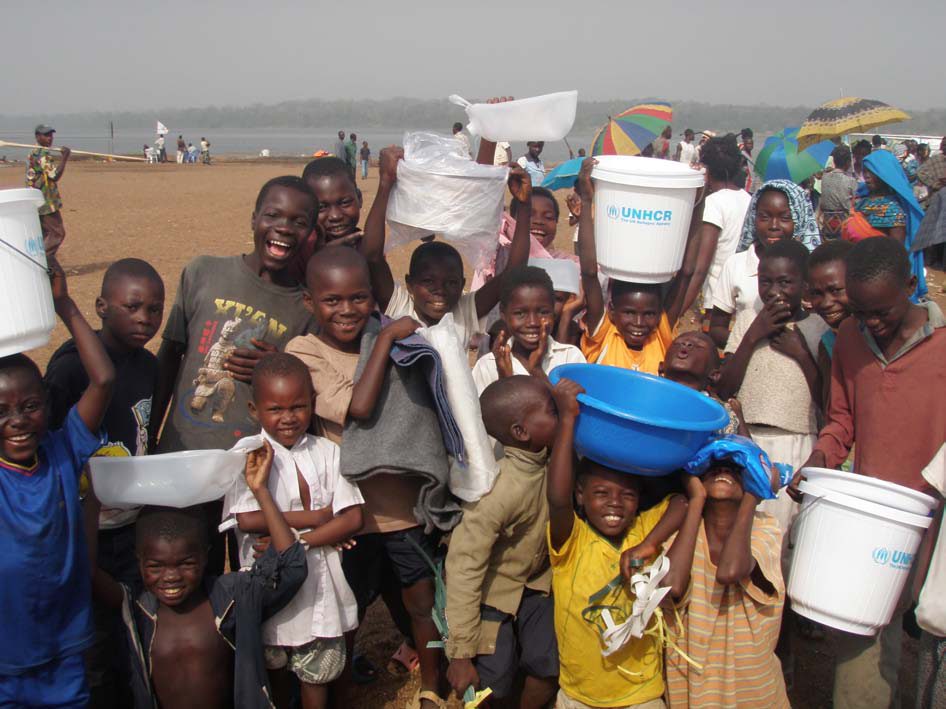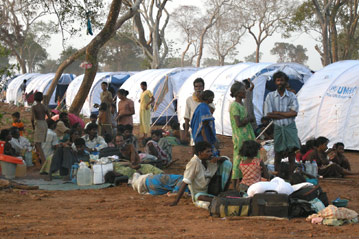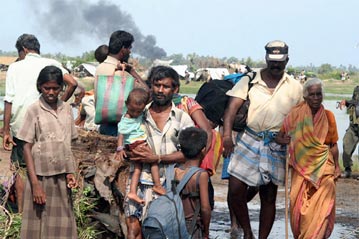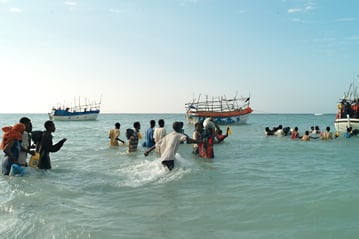Housing project brings hope to refugees in Caucasus
Housing project brings hope to refugees in Caucasus

KRASNOGOR, Russian Federation, October 17 (UNHCR) - Arshako Gigkaev has seen and suffered a lot of misery in the Caucasus over the past decade, but today he feels like the luckiest, happiest person on the planet.
The disabled 77-year-old and his son, both refugees from Georgia, will soon move into a new single-storey brick house in Krasnogor, a village located in the centre of the Russian Federation's republic of North Ossetia-Alania. He has been living in a collective centre in the village since 1994.
"I did not believe that I'd live to enjoy such a moment - a house of my own," cried Gigkaev, an ethnic Ossetian who fled conflict in Georgia in 1991-92 and later had to have both legs amputated due to frostbite. The new house, which he will be given title to, has been adapted for his wheelchair.
Widower Gigkaev and his 47-year-old son, a single man and one of five siblings, are among 72 refugees in Krasnogor to benefit from a UNHCR programme aimed at providing shelter for hundreds of refugees and displaced persons in Russia's Caucasus republics. The houses here were built with an important contribution from the Swiss Agency for Development.
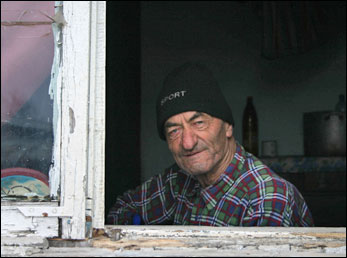
UNHCR has helped hundreds of other displaced people under its shelter project in North Ossetia: between 2000 and last year, the agency funded construction of 266 houses to accommodate more than 900 people displaced from Georgia, mainly from South Ossetia. Most, like Gigkaev, had lived for years under harsh conditions in collective centres.
The government allocated the land, while local authorities have provided utilities and basic infrastructure. The project continues.
In the Russian republic of Ingushetia, UNHCR has long been implementing housing projects aimed at supporting durable solutions for displaced people in the region - especially those who have fled from Chechnya to the east.
After Chechnya's second recent conflict broke out in 1999, tens of thousands of people fled to Ingushetia and many were housed in tented camps. These were dismantled in 2004 and those who had not returned home were moved to grim collective centres, which were only envisaged as being temporary.
UNHCR began working as early as 2000 on durable solutions for those Chechens who wished to integrate locally. Between 2001 and 2006, the Danish Refugee Council constructed 142 houses on behalf of UNHCR in various districts of the republic.
As in North Ossetia, the homes are built on land granted by the government and allocated to families. Most of the beneficiaries were from Chechnya, but some were displaced from North Ossetia's Prigorodny district during cross-border tension in 1992.
"I have never been so lucky in my life - now I will have my own home," said Ashi Ozdiev, who fled her hometown of Bamut during both wars in Chechnya since 1994 and now lives with her husband and seven daughters in one of the UNHCR-funded houses in Malgobek.
"We have good relations with our Ingush neighbours and we feel at home here," she added, noting that her children had settled in at school or university and wanted to stay. Ozdiev heard about UNHCR's shelter assistance programme from the agency's local partner, Vesta. She was overjoyed when her application for help was successful.
"I hope this programme remains here to help other poor people like me. We would never have started the construction of our house without this programme. This house means everything to me," she said.
People are also benefiting from housing help back in Chechnya. UNHCR's "Permanent Shelter" programme in the republic focuses largely on renovating badly damaged houses in urban and rural areas. More than 20,000 houses had been repaired by the end of last year.
UNHCR has also been involved in projects aimed at easing integration of displaced people and returnees in all three of these republics in the northern Caucasus.
It has funded infrastructure improvements, including repair of roads, and has rebuilt schools and communal facilities in the Chechnya capital, Grozny. Vesta, UNHCR's implementing partner in Chechnya, Dagestan and Ingushetia, runs legal counselling centres for the vulnerable.
But the shelter projects have the biggest impact. "When I am looking into the eyes of refugee children who for years had lived in collective centres and are now playing in their own homes, I understand that our work is not in vain," said Irina Kharibova, a UNHCR community services clerk in North Ossetia.
By Vera Soboleva in Krasnogor, Russian Federation

